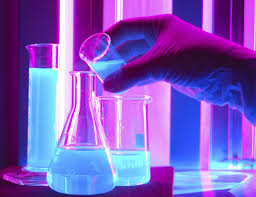Understanding the Chemistry of Cleaning
 To best understand industrial cleaning, it is important to understand the chemistry that goes into cleaning. Soil, soiling, or to soil – as it pertains to the language used involving industrial organizations, is considered any foreign matter that makes a part, metal, material, component, or product dirty, relegating it as unusable until it has been cleaned. The following will provide the definition of terms used to describe the chemistry of industrial cleaning.
To best understand industrial cleaning, it is important to understand the chemistry that goes into cleaning. Soil, soiling, or to soil – as it pertains to the language used involving industrial organizations, is considered any foreign matter that makes a part, metal, material, component, or product dirty, relegating it as unusable until it has been cleaned. The following will provide the definition of terms used to describe the chemistry of industrial cleaning.
A surfactant, which is short for “surface active agent,” is a chemical that, when it dissolves in water or another type of solvent, orients itself between a liquid and a solid substance, which is how it removes soiling. An example of a surfactant is soap, or a type of synthetic detergent.
A chelating agent will combine itself with disruptive metal ions found in water. The metal ions become surrounded by the chelating agent, which works to alter the electronic charge of the metal ions from positive to negative, making it impossible for the metal ions to be precipitated with the surfactants. The chelated metal ions remain contained, yet proactive in the solution, remaining in a harmless state where it will not dissolve the surfactants. Phosphates are the most common chelating agents used in industrial cleaning. Many household cleaners, such as laundry soap, for example, use phosphate chelating agents.
Detergents consist of both surfactants and chelating agents previously described. Because surfactants remove dirt from a soiled surface and chelating works to surround the agonistic metal ions found in cleaning solutions, chelating is usually unnecessary when a detergent is used, as it adds to the cost of formulating the detergent.
Builders are added to an industrial cleaning solution in order to upgrade and protect the cleaning efficiency of a surfactant. Builders are effective because it softens, buffers, and emulsifies (the suspension of a liquid within another liquid) the soil attached to an industrial product. Detergents can also consist of builders, along with surfactants and chelating agents.
Water makes up a large percentage of most liquid cleaner formulas, allowing it to perform many important functions within liquid cleaners. This means water can, and should be considered an active ingredient that enhances the detergency of cleaners because it can actually function as an additional property to the detergency of a cleaner. Water acts as a solvent that separates soil particles once the surfactants reduce the surface tension, which permits the water to penetrate the soil. A perfect example is a clothes washing machine. Without the water, the detergent you add to the clothes washing cycle will no operate correctly. In other words, water is absolutely necessary for the detergent to function as intended.
